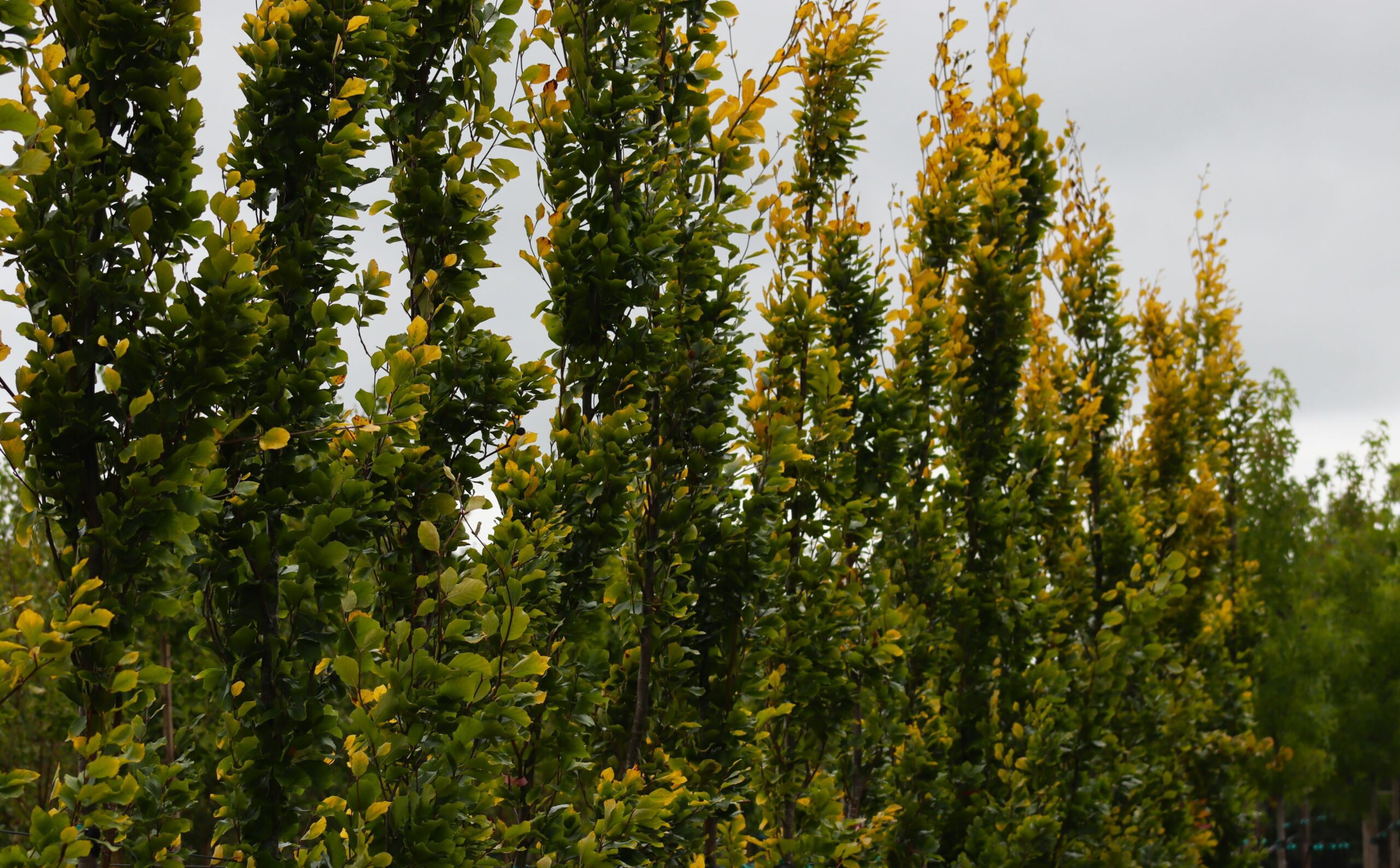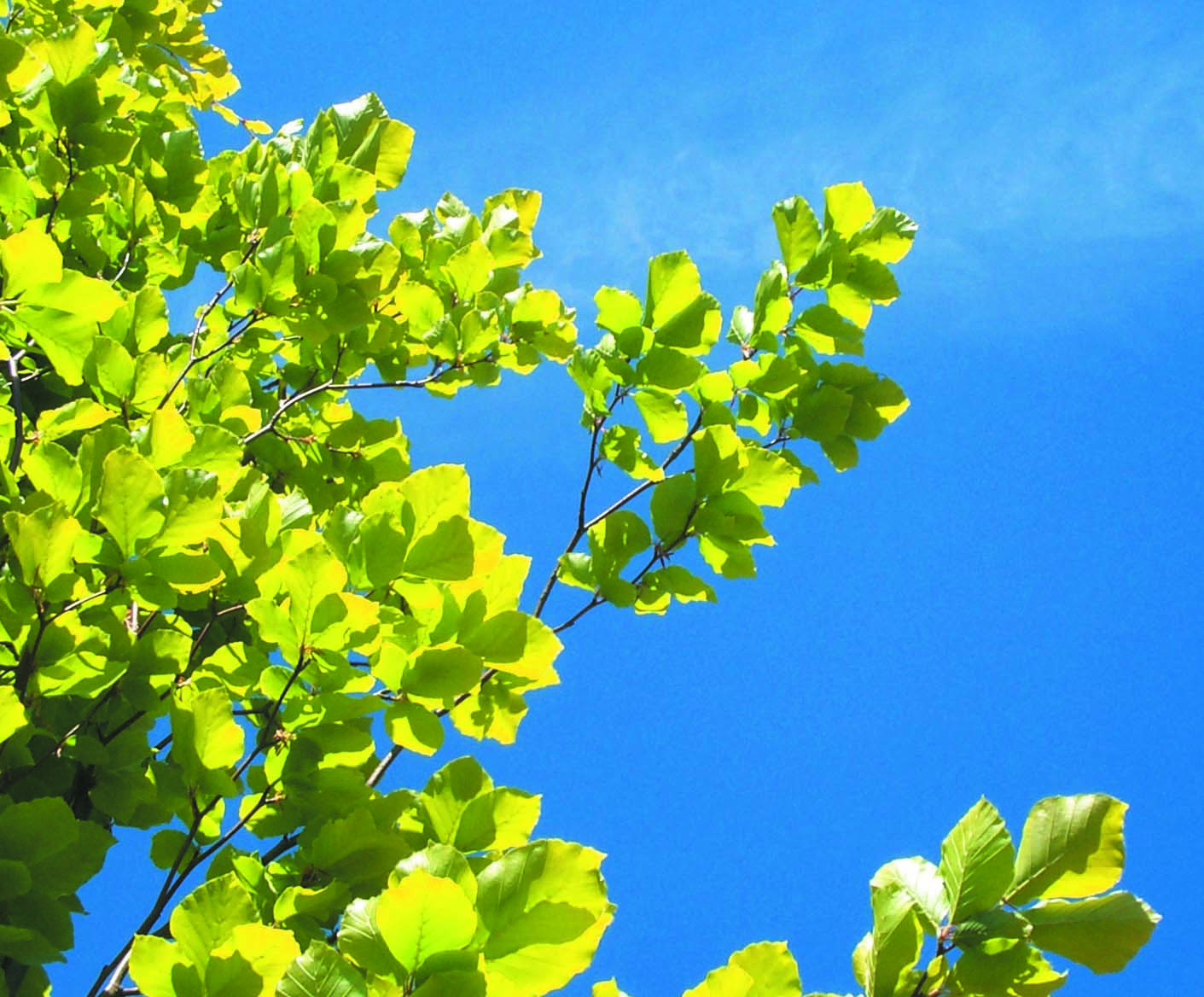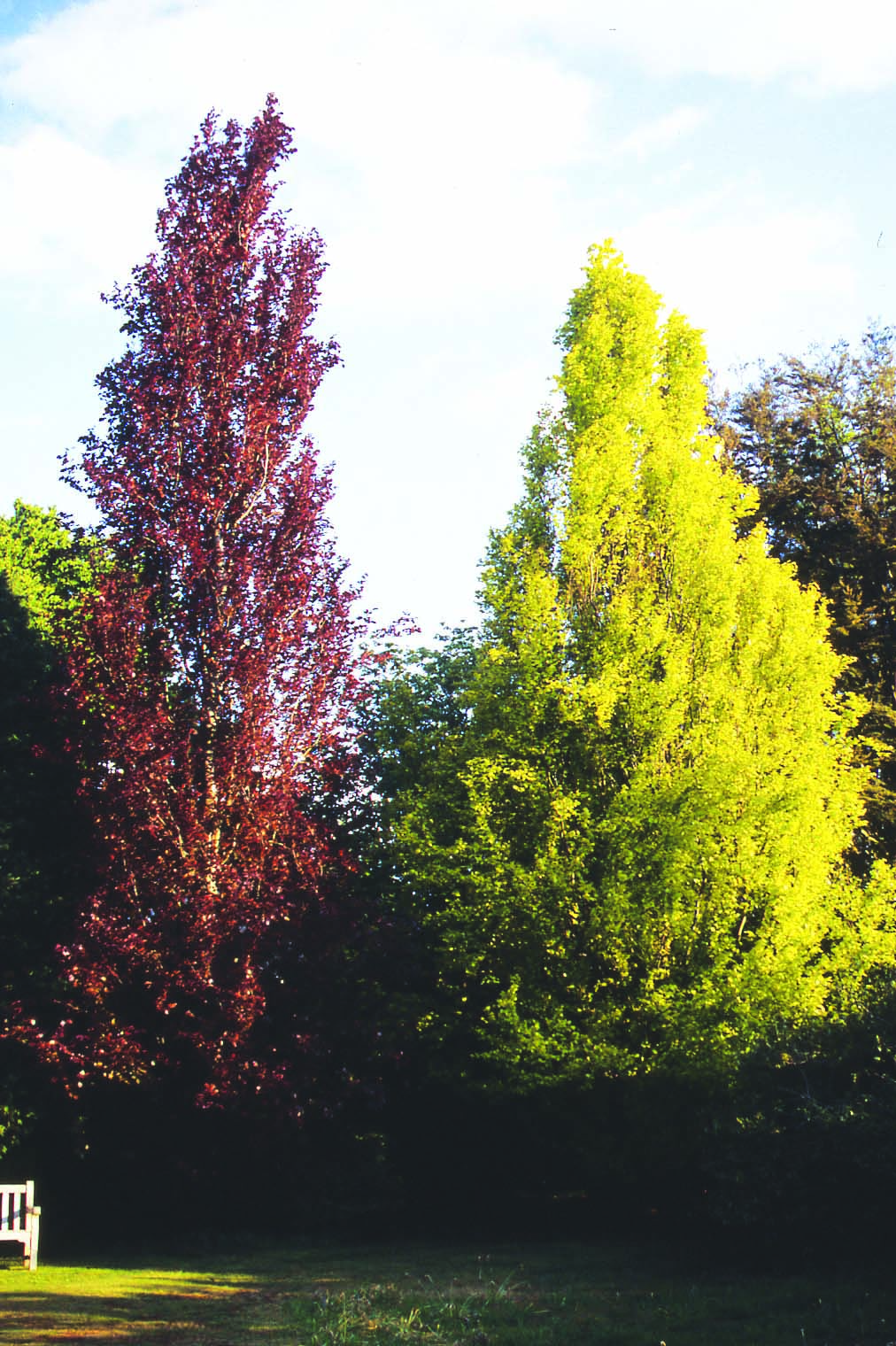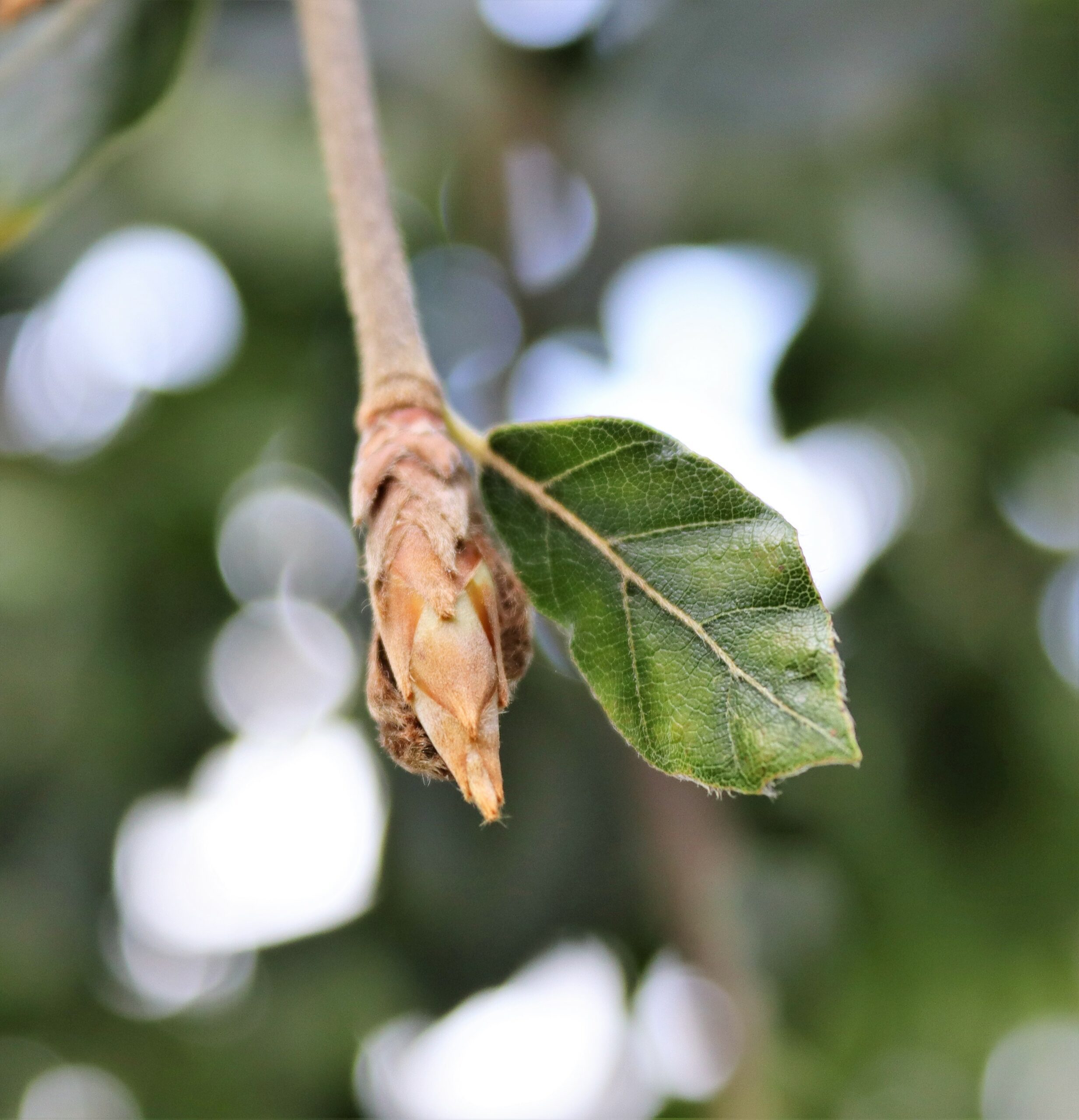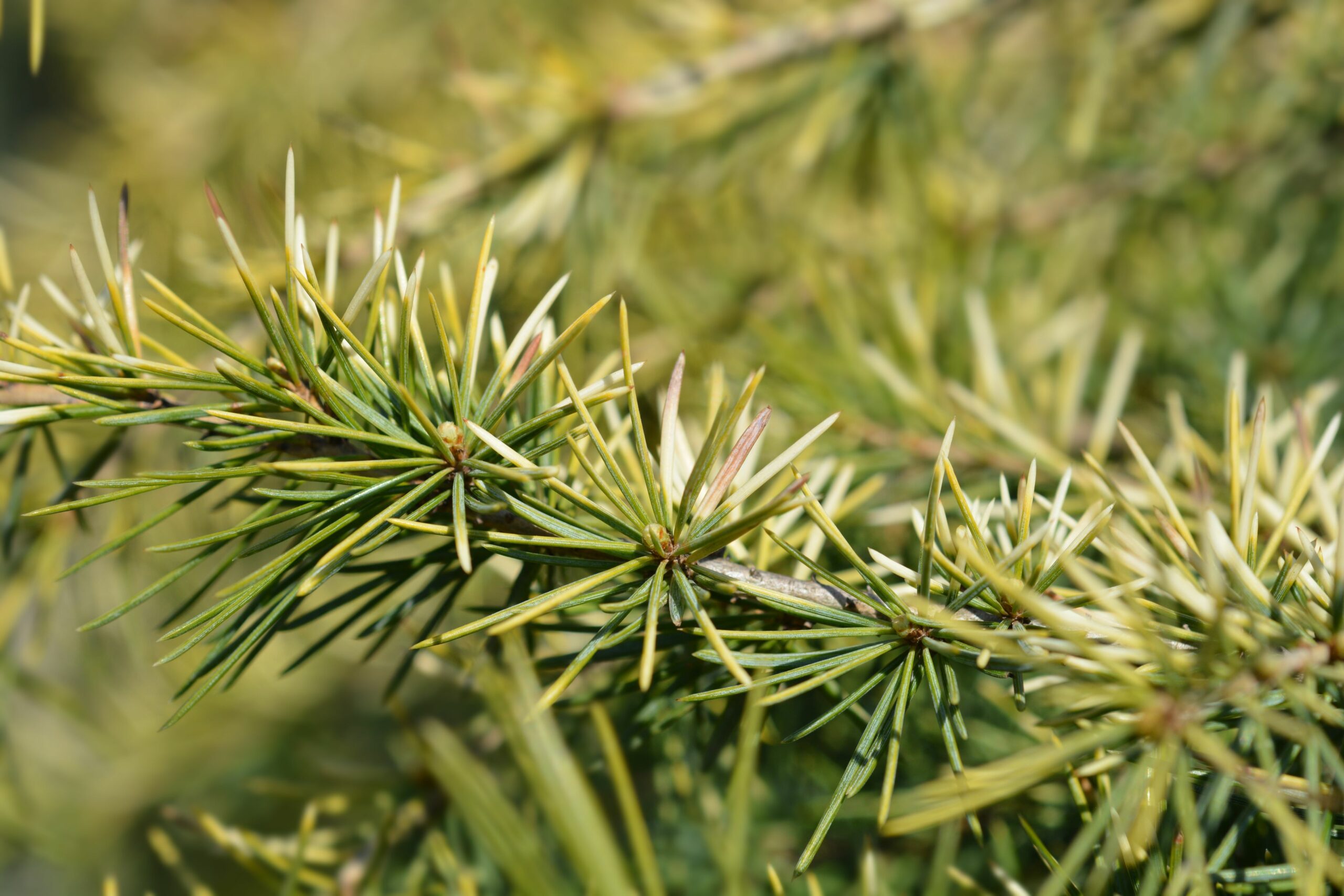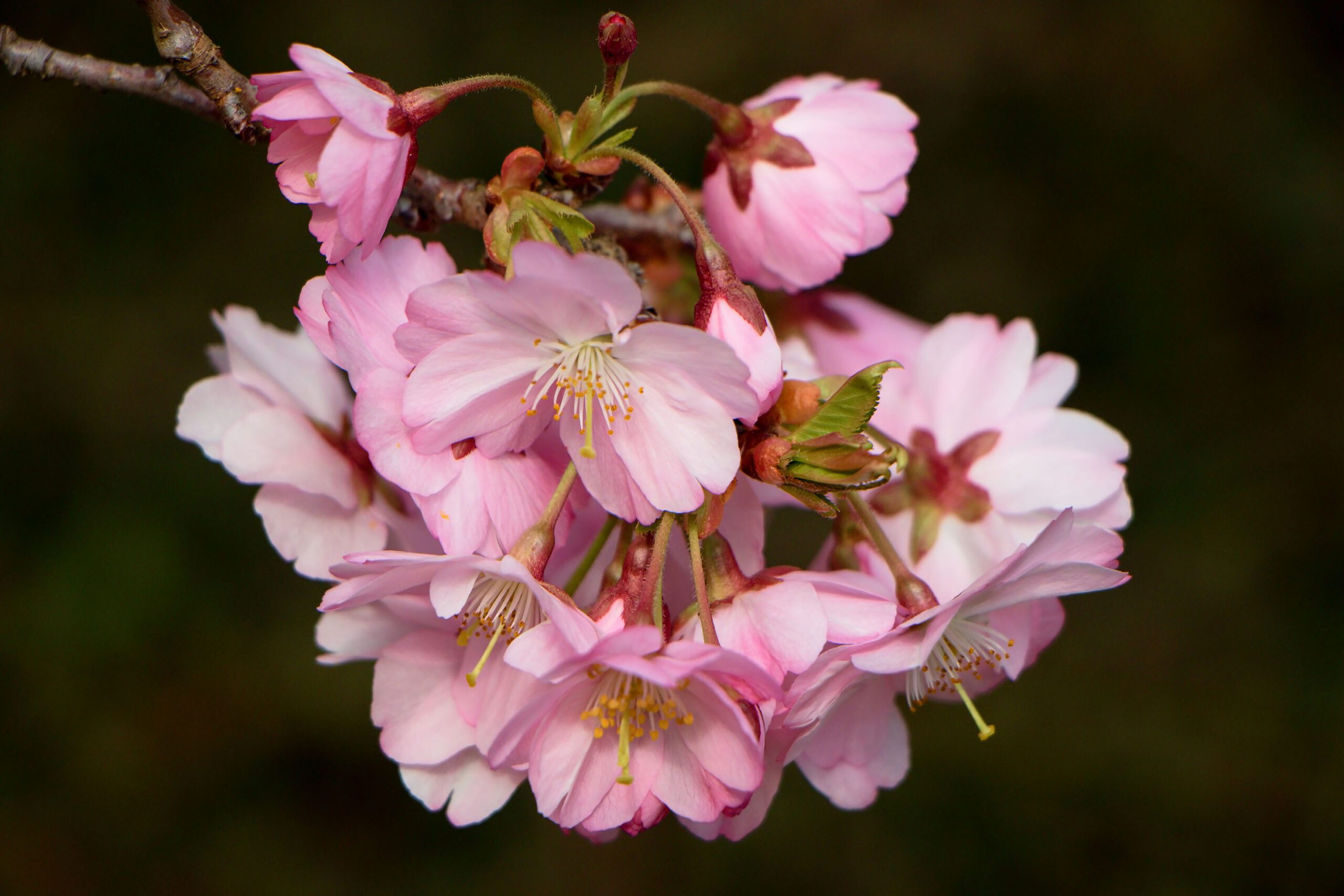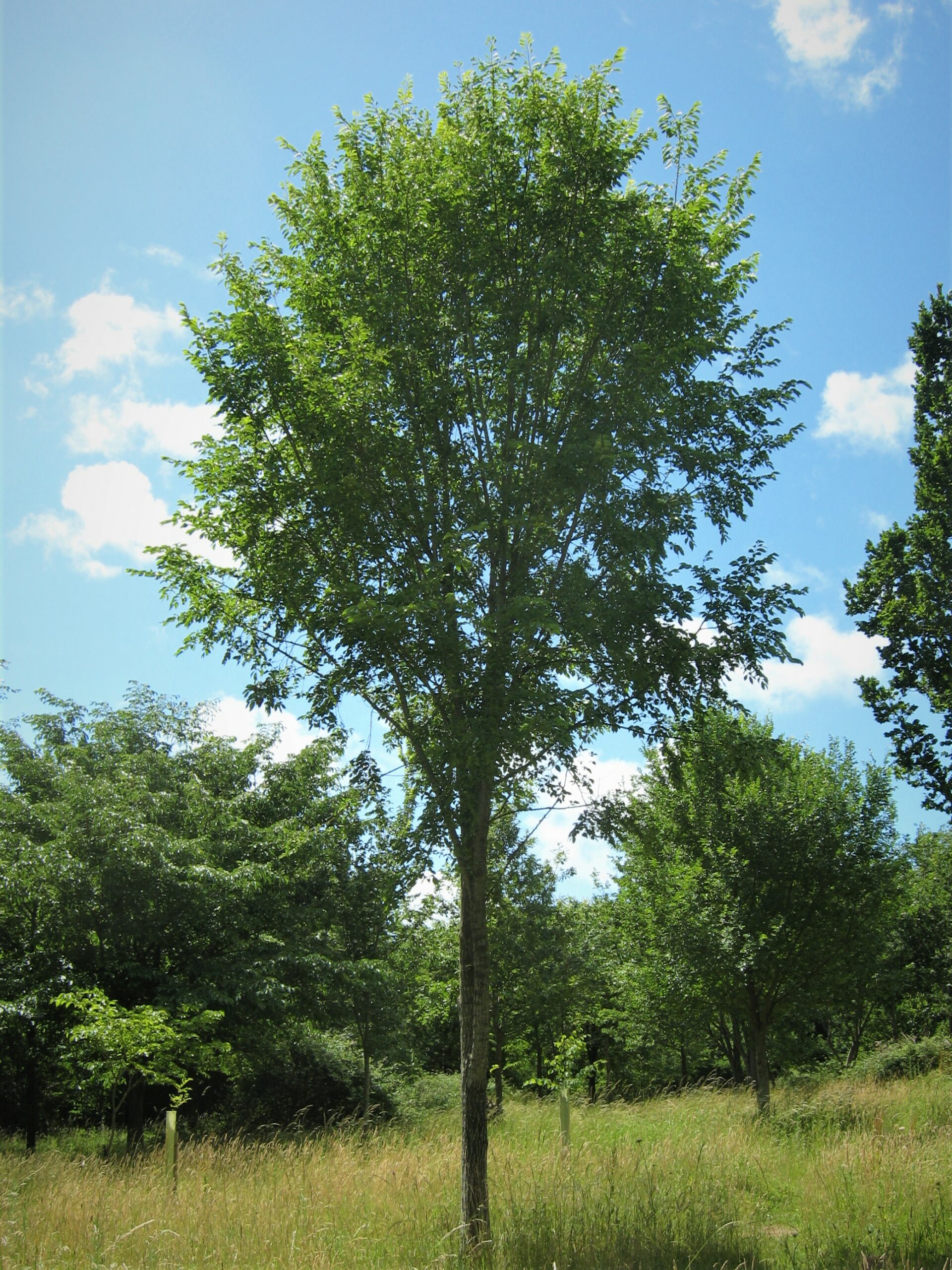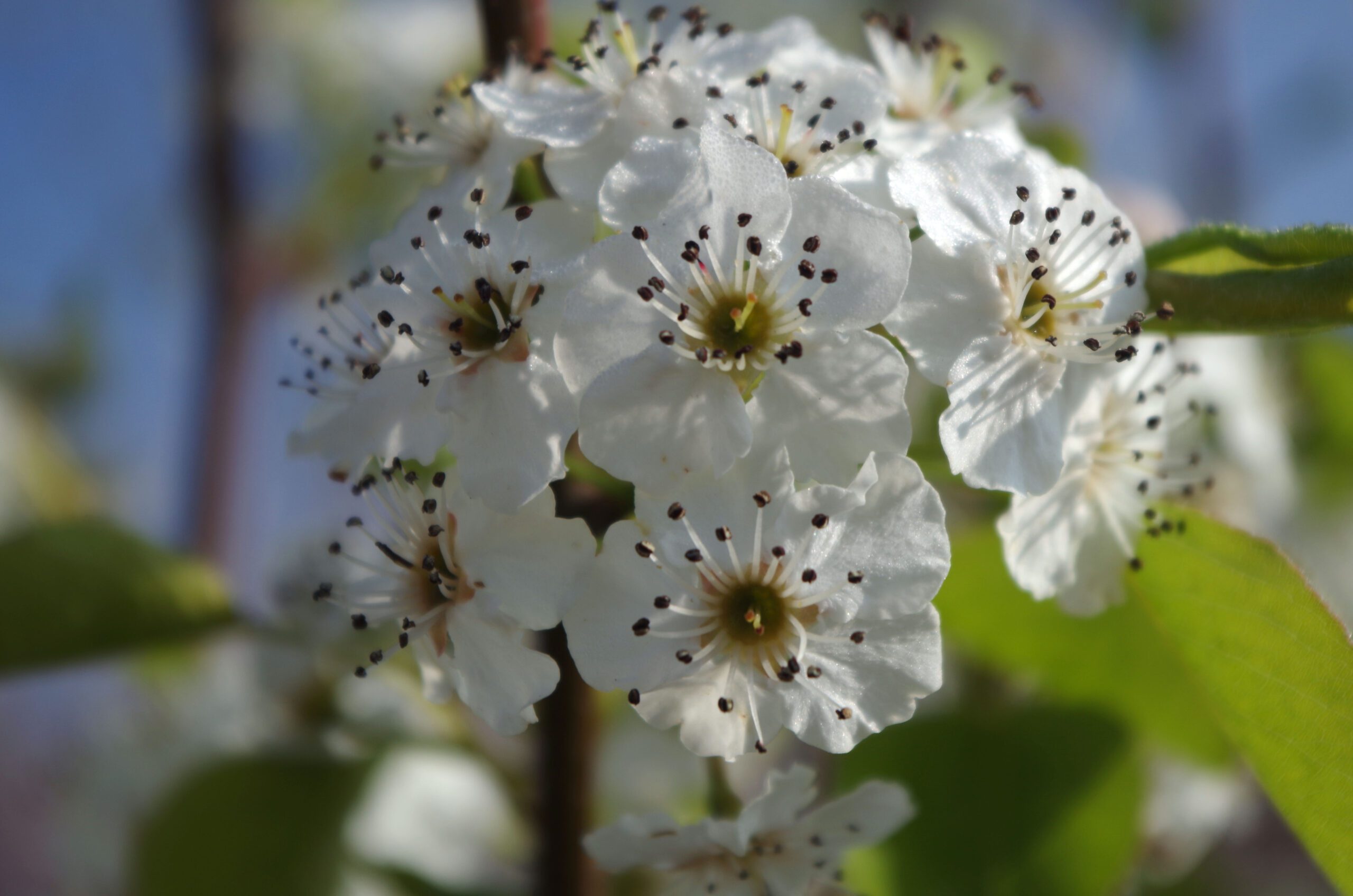Tree Information
Specialities
Tolerances
Wet Soil: Low
Dry Soil: Medium
Lime: Medium
The ‘Dawyck Gold’ originates back to the Tromenburg Arboretum, Netherlands, where it was discovered at the same time as the ‘Dawyck Purple‘, in the summer of 1973. Dick Van Hoey Smith, the Arboretum Director recognised the unique qualities of the Dawyck variety and collected numerous seeds during a mast year. From these seeds, over 100 seedlings sprouted and 8 exhibited a striking golden-yellow colour. Its believed that the cross occurred between the Dawyck and a nearby Fagus sylvatica ‘Zlatia’, leaving to the development of the ‘Dawyck Gold’ variety we know today.
This tree boasts a tall, compact pyramidal canopy that can reach heights exceeding 20m. Despite its towering presence, it maintains a modest width, rarely ever surpassing 3m. This compact profile offers versatile applications, from enhancing narrow central reservations with vibrant colour, to crafting captivating landscape designs. It stands as an ideal centrepiece for corporate campuses and business parks seeking a structured and refined landscape aesthetic.
During spring, the trees elongated buds reveal leaves with a soft yellow hue, transitioning to a lemon green during the peak of summer. These feature pronounced crinkled veins, and are arranged densely within the canopy. As summer transitions to autumn, the foliage adopts a rich bronzed-yellow shade before drying out to brown leaves that persist through winter, especially in sheltered areas.
For a striking landscape feature, consider planting a row of Dawyck trees, alternating between ‘Dawyck Gold’ and ‘Dawyck Purple’ varieties at intervals of 5m. The contrasting colours and distinct forms will create a focal point in any setting.
Visit our Useful Resources for in-depth guides
Discover guides to help you with specifying your trees, caring for your trees and understanding the weights and dimensions of trees.
Useful ResourcesSize
Medium/Large
9m high x 3m wide after 25 years
Environment
Ideal for central reservations, avenues and design specimen planting.
Canopy
A tight pyramidal form of the Beech with ascending branches. Its tall canopy can reach 20m high, remaining at a maximum width of 3m. The branches tend to grow from the base up, displaying a symmetrical form which magnifies the deep purple colour.
Foliage
Buds break in the middle of spring when its butter-yellow leaves unfold. These become a fresh lemon green with deep crinkle cut veins. In autumn, leaves bronze and become golden. Leaves will hold onto the canopy throughout winter.
Resilience
Not demanding of soil type, it requires a free draining structure that does not waterlog. Its long columnar canopy and shallow roots are not suitable for overly exposed locations.
Available As:
Semi-Mature
Make an Enquiry
Enquire below and speak to one of our expert team. For trades only, for general public enquiries click here.
Find Trees For Your Project
View Our TreesSpeak to a Member of Our Sales Team
Make an Enquiry
